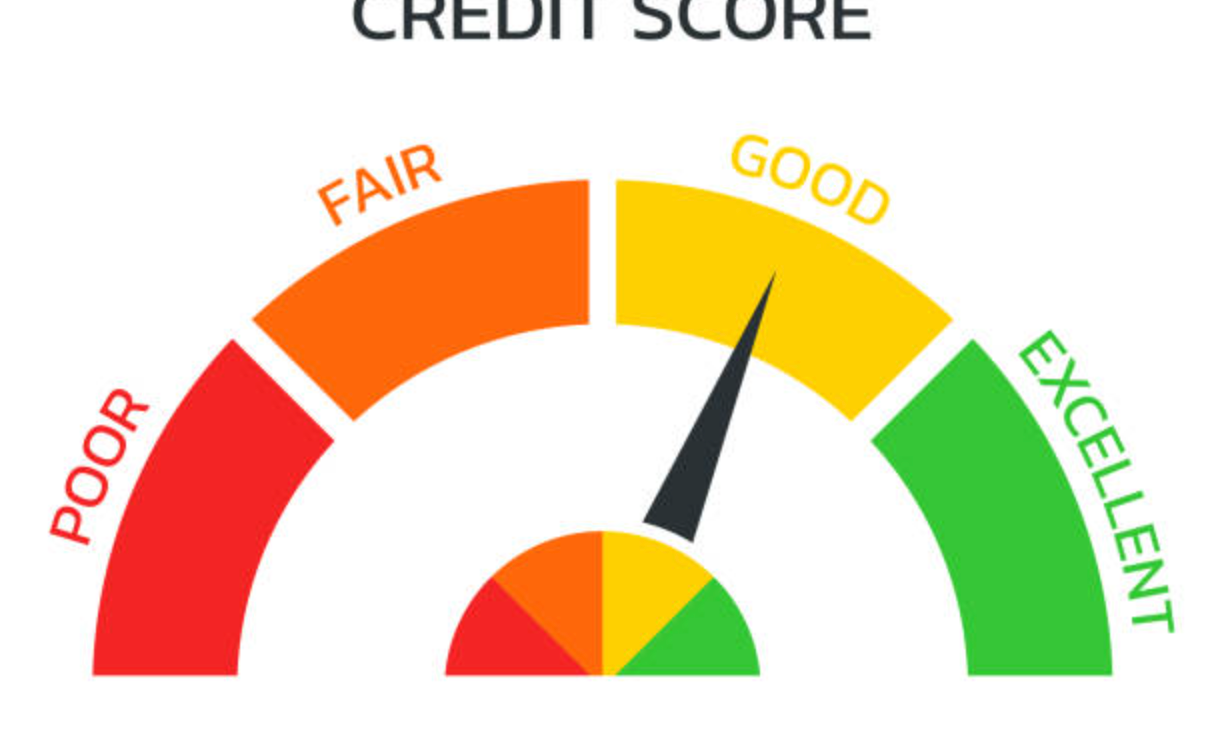Million Dollar Life Insurance: How Much Does It Really Cost?
Learn about the costs and benefits of a million-dollar life insurance policy to secure your family's financial future. This guide covers types of policies, factors affecting premiums, and top insurance companies to help you make informed decisions for your golden years.
Abhinil Kumar
Author

The Journey to Financial Security
Imagine celebrating your 60th birthday, surrounded by loved ones. As you reflect on your journey so far, the thought of securing your family’s financial future becomes more pressing. Retirement is right around the corner, and ensuring a comfortable and secure retirement is paramount. At this stage, you might be considering a million-dollar life insurance policy, but how much does it really cost? This guide will explore the true value and costs associated with a million-dollar life insurance policy, helping you evaluate whether this substantial coverage aligns with your financial goals and provides the peace of mind you seek for your golden years.
The Importance of Life Insurance Coverage
Life insurance coverage is of paramount importance as it serves as a financial shield for loved ones in the event of the policyholder’s unfortunate demise. It provides a crucial safety net, offering financial protection that can lessen the burden on surviving family members during an already difficult time.
The most crucial aspect of life insurance coverage is the death benefit. This is the payout provided to the beneficiaries upon the policyholder’s death. The payout can be a significant amount, giving loved ones the financial means to cope with the loss and secure their future. During such an emotionally overwhelming period, having access to funds can ease the financial strain that may arise.
Moreover, a life insurance payout can be utilized to cover various expenses, such as final expenses. Funeral and burial costs are often exorbitant, and many families struggle to shoulder these expenses without financial assistance. Life insurance can ensure that these expenses are taken care of, allowing the family to focus on grieving rather than financial stress.
Additionally, the death benefit can be employed to cover significant expenses like college tuition. Education is becoming increasingly expensive, and ensuring that children have access to higher education is a priority for many parents. Life insurance can contribute towards these expenses, enabling children to pursue their educational goals without placing an undue burden on the surviving family members.
Understanding Life Insurance Policies
Understanding life insurance policies is crucial for individuals seeking financial protection and security for their loved ones. Life insurance is a contract between the policyholder and an insurance company, where the individual pays regular premiums in exchange for a lump-sum payment, called a death benefit, to be given to the designated beneficiaries upon the policyholder’s death. Life insurance policies come in various forms, providing different levels of coverage and benefits. It is imperative to comprehend the intricacies of life insurance policies, including the various types available, the importance of determining the appropriate coverage amount, and the factors influencing premium rates. With this knowledge, individuals can make informed decisions when selecting a life insurance policy that aligns with their financial goals and safeguards the financial well-being of their dependents in the event of their passing.
Types of Life Insurance Policies
Life insurance is a crucial financial tool that ensures financial security for your loved ones in the event of your untimely demise. There are two main types of life insurance policies: term life insurance and permanent whole life insurance.
1. Term Life Insurance Policy
A term life insurance policy provides temporary protection for a specific period of time. Its primary purpose is to provide financial security for your loved ones in the event of your untimely death.
One of the key features of a term life insurance policy is that it only pays out a death benefit if the insured passes away during the policy term. If the policyholder survives the specified period, there is no payout. This makes term life insurance an affordable option, as the premiums are usually lower compared to permanent life insurance policies.
Term life insurance policies typically offer coverage for a specific number of years, such as 10, 15, 20, or 30 years. During this time, the policyholder pays regular premiums to maintain the coverage. If the insured passes away within the policy term, the death benefit is paid out to the beneficiaries named in the policy.
Once the term ends, the policyholder has several options. They can either apply for a new term policy, renew the existing one, or convert to permanent life insurance coverage. These options provide flexibility and allow the policyholder to reassess their insurance needs based on their changing circumstances.
2. Whole Life Insurance Policy
Whole life insurance is a type of permanent life insurance policy that provides coverage for the entire lifetime of the insured individual. Unlike term life insurance, which only provides coverage for a specific period, whole life insurance offers lifelong protection, as long as the premiums are paid. This type of policy not only offers a death benefit to beneficiaries upon the insured’s passing but also accumulates a cash value over time, which can be used during the insured’s lifetime.
Whole life insurance provides a guaranteed death benefit and fixed premiums, which means that the cost of the policy remains the same throughout the insured’s life. Additionally, the cash value component grows over time and can be accessed through loans or withdrawals, offering a financial safety net for emergencies or other financial needs.
Factors Affecting Life Insurance Rates
There are several key factors that can influence life insurance rates. These factors include the type of policy, length of policy, age, gender, health, lifestyle, and family’s health. Understanding how these factors can impact the cost of life insurance is crucial for individuals seeking suitable coverage.
1. Medical History
Medical history is a significant factor that insurers consider when determining life insurance rates. Applicants with pre-existing medical conditions or unhealthy habits like smoking are considered higher risk and may face higher premiums. Underwriters assess an individual’s health through medical examinations, including blood tests and physical evaluations.
2. Age
Age is a significant determinant of life insurance premiums. Generally, the younger an individual is, the lower the premium will be. This is because younger individuals are considered to be at lower risk of premature death. Securing a policy at a younger age can potentially save on coverage costs in the long run.
3. Lifestyle Habits
Lifestyle habits play a significant role in determining life insurance premiums. Engaging in risky hobbies or occupations, smoking, or excessive drinking can lead to higher premiums due to the increased risk of health issues and premature death.

Million Dollar Life Insurance
Coverage Amounts
When considering life insurance, individuals should carefully evaluate the coverage amounts that suit their specific needs. The chosen coverage amount determines the financial protection that will be provided to their loved ones in the event of their death. Several crucial factors are taken into account when determining the appropriate coverage for life insurance policies.
1. Income Replacement
The coverage amount should be sufficient to replace the deceased individual’s income and ensure that their dependents can maintain their current standard of living. By calculating the pre-tax annual income, individuals can determine the level of financial support their loved ones will require.
2. Living Expenses
Living expenses should be considered when selecting the coverage amount. This includes everyday costs, such as housing, utilities, transportation, food, and healthcare. By estimating these expenses, individuals can guarantee that their beneficiaries will have enough funds to cover their basic needs.
3. Debt Coverage
It is crucial to consider all outstanding debts, such as mortgages, credit cards, loans, and other financial obligations. The life insurance coverage should be adequate to cover these debts, preventing any financial burden from falling on the family members left behind.
How Much Is a Million Dollar Life Insurance Policy?
A million-dollar life insurance policy is a substantial financial protection plan that provides a designated payout of one million dollars upon the insured’s death. Such a policy is often sought after by individuals who have significant financial responsibilities, such as a large mortgage, dependents, or outstanding debts. Understanding the cost and factors that impact the premium of a million-dollar life insurance policy is essential to make an informed decision about securing adequate coverage for the future financial stability of loved ones.
Determining Factors for Cost
The cost of a million-dollar life insurance policy is determined by a range of factors that assess the risk associated with insuring an individual. These factors can vary depending on the insurance company but generally include the type and length of the policy, age, gender, health, lifestyle, and family’s health.
1. Health Status
The health status section of a life insurance application is crucial in determining the premiums an individual or family will pay. Certain diseases or health issues can result in higher premiums due to the increased risk they pose to the individual’s life expectancy. Smokers also face higher premiums due to the significant health risks associated with tobacco use.
2. Age
Age plays a significant role in determining life insurance premiums, with costs increasing as individuals get older. Getting life insurance at a younger age can lead to substantial savings over time. Younger individuals generally have better health and lower chances of developing serious health issues, making them lower-risk to insurers.
3. Lifestyle Habits
Lifestyle habits, such as engaging in risky hobbies or occupations, can impact the cost of life insurance. Additionally, the health history of the policyholder’s family may be taken into account, as certain medical conditions may increase the risk associated with insuring an individual.
Average Cost of a Million-Dollar Policy
The average cost of a million-dollar policy can vary greatly depending on several factors. These factors include age, gender, health, coverage amount, and the type of life insurance chosen. To determine the most accurate average cost of a million-dollar policy, it is best to request a quote from a reputable life insurance agency.
Top 3 Million Dollar Life Insurance Policies and Companies
When choosing a million-dollar life insurance policy, it’s essential to compare options from top-rated insurance companies to find the best fit for your needs. Below are three reputable life insurance companies, along with their respective plan details and links for more information.
1. Haven Life
Policy Type: Term Life Insurance Term Lengths: 10, 15, 20, 25, 30 years Key Features:
- Affordable Premiums: Competitive rates for term life policies.
- Instant Decision: Eligible applicants can get coverage without a medical exam.
- Rider Options: Available riders include an accelerated death benefit rider.
- Application Process: Fully online with quick approvals.
More Details: Haven Life
2. Banner Life
Policy Type: Term Life Insurance Term Lengths: 10, 15, 20, 25, 30, 35, 40 years Key Features:
- Flexible Terms: Offers longer term lengths up to 40 years.
- Conversion Options: Policies can be converted to permanent life insurance without additional medical exams.
- Competitive Rates: Known for affordable premiums across various age groups.
- Rider Options: Includes term conversion riders and accelerated death benefit riders.
More Details: Banner Life
3. AIG (American International Group)
Policy Type: Term Life and Whole Life Insurance Term Lengths: 10, 15, 20, 25, 30 years for term life Key Features:
- Wide Range of Products: Offers both term and permanent life insurance policies.
- Living Benefits: Some policies include living benefits for critical, chronic, and terminal illness.
- Customization: Flexible policy options with additional riders.
- Reputation: Strong financial stability and customer service.
More Details: AIG Direct
Conclusion
Understanding the cost and importance of a million-dollar life insurance policy is essential for securing your financial future and that of your loved ones. By carefully evaluating factors such as age, health, lifestyle habits, and the type of policy, you can determine the most suitable coverage to meet your needs. A million-dollar life insurance policy provides substantial financial protection, ensuring that your family is supported in the event of your untimely demise. Remember to consult with life insurance agents to get tailored quotes and advice on the best policies for your situation. By planning ahead and investing in a comprehensive life insurance policy, you can achieve peace of mind knowing that your family’s financial future is secure.
FAQs
1. What factors influence the cost of a million-dollar life insurance policy?
Several factors affect the cost of a million-dollar life insurance policy, including age, health, gender, lifestyle habits, and the type and length of the policy. Younger, healthier individuals typically pay lower premiums. Additionally, term life policies tend to be more affordable than permanent life policies.
2. How does annual income affect life insurance policy costs?
Annual income plays a significant role in determining the appropriate coverage amount for life insurance. Insurers often recommend a policy that covers 10-12 times your annual income to ensure your family can maintain their standard of living and cover future expenses, such as mortgage payments and college tuition.
3. Can I get a million-dollar life insurance policy if I have student loans?
Yes, you can obtain a million-dollar life insurance policy even if you have student loans. In fact, having life insurance can be a smart financial move to ensure that your outstanding debts, including student loans, are covered in the event of your death, preventing your family from bearing the financial burden.
4. What are the benefits of securing a life insurance policy when you are in excellent health?
Securing a life insurance policy while you are in excellent health typically results in lower premium payments. Insurance companies assess your health status during the underwriting process, and individuals in excellent health are considered lower risk, which translates to more affordable rates.
5. How do living expenses impact the amount of life insurance coverage needed?
Living expenses are a crucial factor in determining the amount of life insurance coverage required. You should consider all your monthly costs, including housing, utilities, food, transportation, and healthcare, to ensure that your policy provides enough financial support for your family to cover these expenses in your absence.
6. What is the difference between the monthly cost and the actual cost of a life insurance policy?
The monthly cost refers to the regular premium payments you make to keep your life insurance policy active. The actual cost of a life insurance policy includes the total amount paid in premiums over the policy’s term, along with any additional fees or charges associated with the policy. Understanding both can help you budget effectively and choose the right policy for your needs.
7. How can I get accurate life insurance quotes for a million-dollar policy?
To get accurate life insurance quotes for a million-dollar policy, consult with multiple life insurance agents and use online tools to compare rates. Provide detailed and truthful information about your age, health, lifestyle habits, and desired coverage to ensure you receive precise quotes tailored to your circumstances.


